EXPERIENCE ENCANVAS IN 60-MINUTES!
We're always happy to walk you through Encanvas no matter where you are in the world.

Most enterprises today operate more than 80 SaaS apps, the consequence being ‘data sense’ is harder. The good news is that you can use a no-code aPaaS platform to bridge across enterprise silos to tame data spaghetti and create a single version of the truth

When the possibility of Software-as-a-Service (SaaS) solutions arrived into the market in the early 2000s — heralded in by the evolution of web platforms and cloud computing — they were game-changing for innovators in the tech industry.
Through cloud SaaS innovations, developers could bring their products to market faster (and eat much lower costs), focus on very tight niche solutions, offer products on a subscription, and give customers the opportunity to try them out immediately. Furthermore, technical support and endorsements could be supplied through the same online site that sold the products.
For buyers, SaaS was equally advantageous. No longer did they need to commit to a purchase before experiencing a product to see if it delivered value. The quality of products leaped up the scale, as providers HAD to deliver excellent quality, intuitive, and responsive applications.
The downside of SaaS is that it spreads your data across a wide number of data silos.
Enterprise computing practitioners were somewhat less thrilled by SaaS. Before its arrival, the role of the Enterprise CTO was unquestioned. They were the gods of technology, and nobody could get anything done in IT without their blessing.
The idea that departmental managers could arrive at the IT desk and start demanding software products they hadn’t even seen before, and show them immediate advantages was hard to counter, and left many IT heads on the back foot, trying to defend the common sense of requiring testing, integration and further validation before any recommendation was adopted.

The rise of SaaS adoption levels in the enterprise has soared over two decades, as department heads have got ever more involved in selection decisions on the tools they, and their teams, want to use. The power to make decisions drifted from the center of the enterprise to the margins.
Few could argue that the quality of applications used in business has benefited from SaaS. But at what cost?
Step into any large enterprise and you’ll encounter find the common problem of data held in various SaaS platforms with departmental managers pulling their hair out trying to gather it up to drive decisioning.
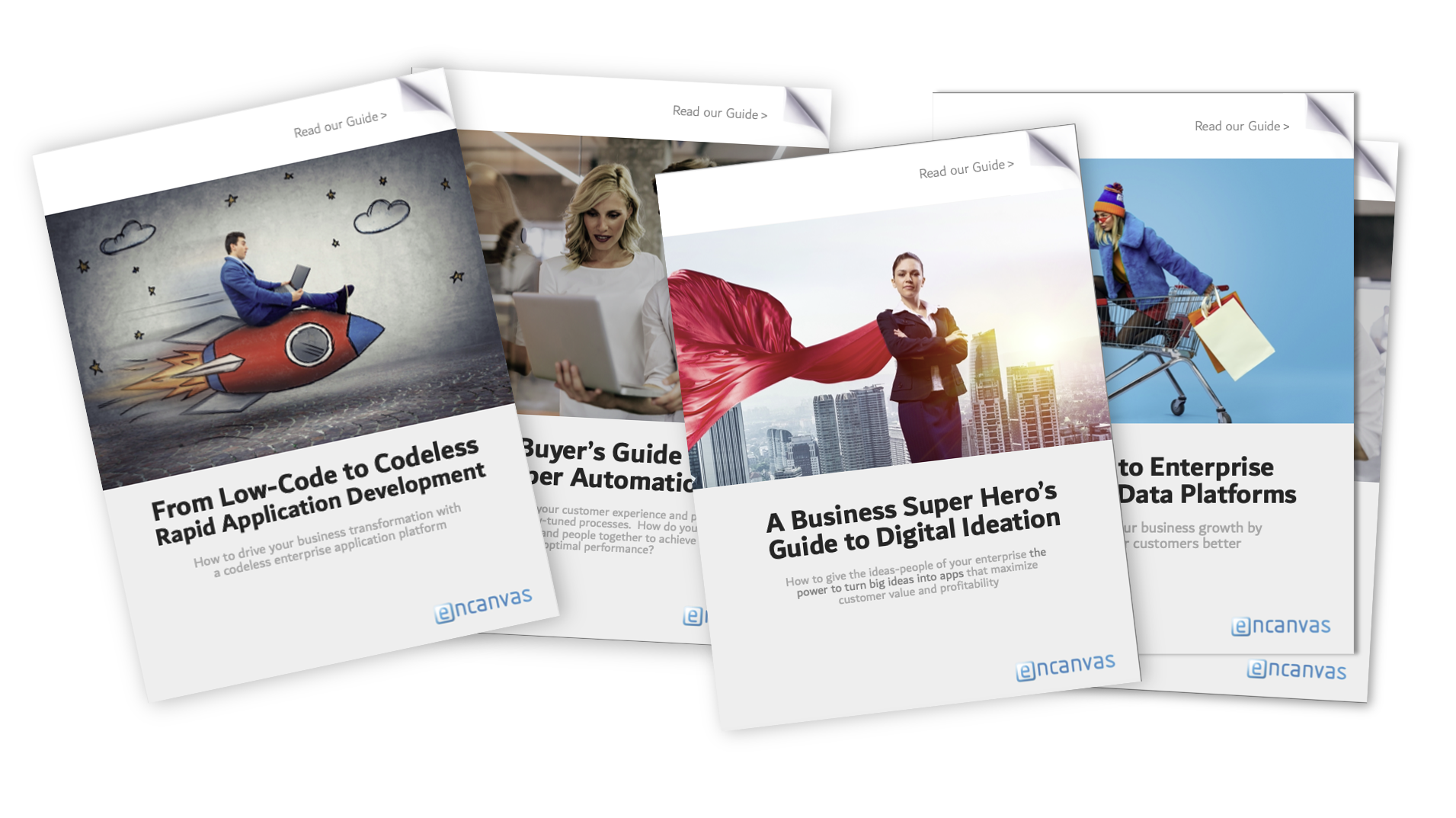
Guide to Digital Transformation
Guide to Hyper Automation
Guide to Digital Ideation
Guide to Customer Data Platforms
Guide to No-Code Platforms
Software-as-a-Service technology has played its part in making it close to impossible for real-time business decisioning to happen across the enterprise without an additional layer of ‘business intelligence and analytics’ technology being superimposed.
Even with the best data visualization and analytical tools, the problem of fragmented data silos pervades.
It’s not simply the case that SaaS tools separate usage activity into different places across the enterprise computing biosphere, using a myriad of separately authored apps results in every app using its own core data tables for common things that every organization needs to know about — such as people, departments, organizational hierarchies, policies, processes, suppliers and user groups. While some of these building blocks can be inherited from common directories, most are simply individually reproduced time and again by vendors.
Growing demand from department leaders and executives for new apps and real-time data analytics has created a demand for data reuse. And it’s when these requests emerge that the problems of data integrity and quality emerge.
Install any new digital innovation into an enterprise, and it’s almost inevitable that existing data will want to be harnessed.
When this happens, time and again, one finds that the original data tables operating within SaaS applications are incomplete, unused, or irrelevant. Business Analysts find themselves scratching their heads trying to work out which bits of data to string together to build a reliable picture of the operating reality.
Businesses want to be ‘digital’ but lack the quality and integrity of data to innovate.
It begs the question: Is there a better way? The answer is yes — and it’s been around for a while.
Secure&Live – A feature rich and data secure digital transformation platform. Secure and Live is a codeless Enterprise applications Platform-as-a-Service (aPaaS), built to turn business models and strategies into apps.
GlueWare – Enterprise iPaaS for bringing your data together, mashing it up, and bridging between your eCommerce store and back-office, streamlining processes for maximum results.
AppFabric – Build as many apps as you need using an agile codeless SDLC approach and change them as often as you like.
Live Wireframe – Design and publish ebooks, courseware and apps, then go live in two clicks!
CDP – Codeless Customer Data Platform to create a single view of your customer data. Use our data integration tools to harvest insights from across your enterprise and beyond.

Learn about the data safeguarding, features and modules of Encanvas that make it a leader in codeless enterprise aPaaS
The concept of cloud Platform-as-a-Service solutions has been buzzing around for over a decade since the arrival of cloud computing. PaaS describes the layer of technology that sits between Software-as-a-Service and the mechanical end of cloud–hardware infrastructure, memory disks and the like.
A no-code application PaaS is an environment for designing, deploying and operating tens — if not hundreds — of apps and software robots without needing to use code to design, deploy, and run them.
Using no-code-aPaaS means that Business Analysts found within IT or Digital teams (not coders) author applications. They do so working in consort with business stakeholders in what Gartner fashionably calls ‘fusion teams.’
Applications requirements go straight from the workshop whiteboard into a live wireframe that swiftly becomes a new application.
Examples of mobile and web desktop applications designed and deployed on no-code aPaaS
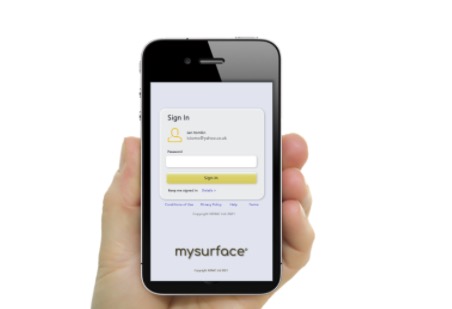
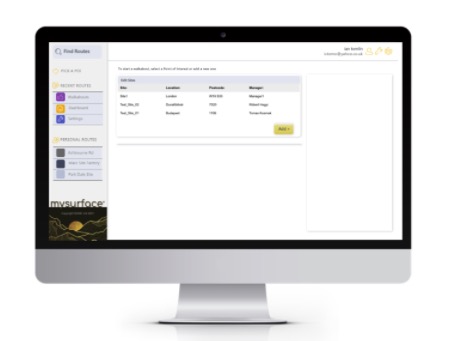
What makes no-code aPaaS different to what comes before is that at least 60% of the things you need to produce an Enterprise App come out of the box. It means the only things business Analysts need to get right are the drag and drop rules, if-then logic and workflows of the application they are building that are unique to the requirement. While No-Code applications development is fast, building apps on a No-Code Application Fabric is even faster.
People used to argue you needed a two-speed IT capability to make digital business work. That notion has thankfully gone away. No-code aPaaS returns IT influence from the outer fringes of the enterprise to the center.
That’s an awkward conversation in today’s boardrooms, but it’s arguably a necessary one.
Organizations that want to harness data, become data-driven, keep data safe, eradicate self-authored apps and spreadsheets, achieve excellence in customer experience, serve up the best applications for their stakeholders, and cut costs. History tells us that the best way to achieve it is to have a unified computing and data environment.

Data quality/integrity benefits include:
1. IT people used to coding will be resistant to change
2. Departmental heads may initially be resistant to the idea of sharing their data
3. Not every no-code aPaaS offers ALL the features you will need. So selecting the right platform with be important and isn’t always straightforward.

Ian Tomlin is a management consultant and strategist specializing in helping organizational leadership teams to grow by telling their story, designing and orchestrating their business models, and making conversation with customers and communities. He serves on the management team of Encanvas and works as a virtual CMO and board adviser for tech companies in Europe, America and Canada. He can be contacted via his LinkedIn profile or follow him on Twitter.
Now read:
At Encanvas we have a passion for low-code / no-code (we like to say codeless) software development. We’ve been leading innovation in the enterprise rapid applications development (low-code / no-code / data mashups) industry since 2002.
Our enterprise digital transformation platform is used to design, deploy and run custom apps by uniquely blending application (aPaaS), integration (iPaaS), Robotic Process Automation (RPA), and data mashup codeless software tools.
Encanvas brings agility and innovation to businesses. Used by data-driven organizations around the world, our platform evolves digitalization plans at the speed of light to maximize customer experience and minimize IT costs. Accelerate time to value of new applications as part of your digital transformation or data engineering program. Read the Encanvas Blog to learn more about what we do.

Using a no-code design platform, designers use visual building blocks, if/then rules and simple wizards to create user interfaces and applications logic. The design tool forms an abstraction layer. behind the scenes, the app is converting your beautiful design into bits and bytes – so you don’t have to. It means anyone with basic database or spreadsheet knowledge can become a citizen developer.

Enterprise computing practitioners were somewhat less thrilled by SaaS. Before its arrival, the role of the Enterprise CTO was unquestioned. They were the gods of technology, and nobody could get anything done in IT without their blessing.
The idea that departmental managers could arrive at the IT desk and start demanding software products they hadn’t even seen before, and show them immediate advantages was hard to counter, and left many IT heads on the back foot, trying to defend the common sense of requiring testing, integration and further validation before any recommendation was adopted.

The rise of SaaS adoption levels in the enterprise has soared over two decades, as department heads have got ever more involved in selection decisions on the tools they, and their teams, want to use. The power to make decisions drifted from the center of the enterprise to the margins.
Few could argue that the quality of applications used in business has benefited from SaaS. But at what cost?
Step into any large enterprise and you’ll encounter find the common problem of data held in various SaaS platforms with departmental managers pulling their hair out trying to gather it up to drive decisioning.
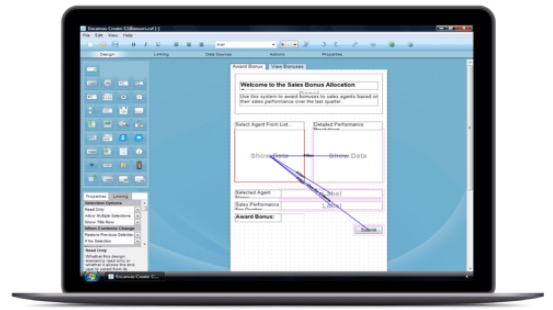
Businesses build custom apps using no-code platforms for lots of reasons. Step through the latest articles on app engineering and you’ll find the three main areas of no-code application development demand. They are:
Customers want to serve themselves. That means processes need to extend beyond the remit of a company website. To bind together front and back-office systems requires the development of new apps. Additionally, these apps need to be deployed on mobile, desktop and web form factors. They must interact with the incumbent systems and harvest data from across and beyond the enterprise.
Another major reason for the rise in no-code application development comes from the recognition that back-office systems need to be automated. Most businesses today rely on hard-copy documents and humans to some extent to fill in gaps between automated processes. Broken process steps and simple things like signatures are common culprits for offline process steps. Hyperautomation is about leveraging the latest crop of digital technologies—including blockchain, AI, big data, cloud computing, robotics and RPA, chatbots, the Internet of Things (and sensor networks), etc.—to automate processes at scale. To create the apps you’ll need, manual coding isn’t an option isn’t an option because it takes too long and costs too much. That’s why people are turning to no-code applications development.
The democratisation of artificial intelligence technology has led to a dramatic growth in the use of computers in decisioning that would previously have been left for humans to do. Most startups finding investment in Silicon Valley these days have an ‘AI’ aspect to their business models. Data analysis and decisioning form a major part of the digital transformations businesses are today considering to gain a competitive advantage on their rivals. All these aspects of enterprise IT fundamentally need no-code application development to speed their adoption.
Justify one no-code application development for any of the above categories, and you will find the opportunities for no-code app development don’t stop there.
Most businesses today, even will all of the great SaaS tools and business apps at their disposal, are underpinning a large proportion of their critical business processes with spreadsheet systems and self-authored apps that rest on the desktop and are largely invisible to IT.
Back in the day, that wasn’t really an issue—and everyone did it—but in an era where data security and privacy is everything, and customers want the transparency of operations to serve themselves 24/7, well, spreadsheets quite frankly don’t cut the mustard. The downside of SaaS is that it spreads your data across a wide number of data silos. This all means every company I know has a shopping list of new no-code developed apps they want to build to serve customers better, automate further and faster to cut costs, and to improve data use and value, through richer data analytics and decisioning.
Back in the day, that wasn’t really an issue—and everyone did it—but in an era where data security and privacy is everything, and customers want the transparency of operations to serve themselves 24/7, well, spreadsheets quite frankly don’t cut the mustard. The downside of SaaS is that it spreads your data across a wide number of data silos. This all means every company I know has a shopping list of new no-code developed apps they want to build to serve customers better, automate further and faster to cut costs, and to improve data use and value, through richer data analytics and decisioning.
Which all sounds great. In the real world of digital businesses today, no-code application developments extend beyond the expectation that only one app will be the outcome of that investment. Businesses need enterprise grade no-code platforms that support not just the design, but the roll-out and ongoing operational maintenance of custom no-code apps.The enterprise IT today is flooded with new ways to develop business applications using low-code or no-code tooling. This innovation in software engineering reduces or removes the need for coding and scripting when authoring apps. These tools help a non-technical (or less IT competent) user to build custom apps for themselves.
Secure&Live – A feature rich and data secure digital transformation platform. Secure and Live is a codeless Enterprise applications Platform-as-a-Service (aPaaS), built to turn business models and strategies into apps.
GlueWare – Enterprise iPaaS for bringing your data together, mashing it up, and bridging between your eCommerce store and back-office, streamlining processes for maximum results.
AppFabric – Build as many apps as you need using an agile codeless SDLC approach and change them as often as you like.
Live Wireframe – Design and publish ebooks, courseware and apps, then go live in two clicks!
CDP – Codeless Customer Data Platform to create a single view of your customer data. Use our data integration tools to harvest insights from across your enterprise and beyond.

Learn about the data safeguarding, features , integration tooling and modules of Encanvas that make it a leader in codeless enterprise aPaaS
Every good no-code applications designer knows that the best results come from an engaged stakeholder group able to articulate how an app should work.
The design process today needs to allow business people and app stakeholders to get hands-on in the app development. This means removing the code from design screens, because normal human-beings that chose not to take Computing as their primary choice in college, don’t fair well when code is presented on a screen. It’s an instant put-off.
For this reason, no-code software platforms are taking off in popularity. Not only do they produce faster results, but generally the quality of apps they produce is as better fit to business needs.
At some point, no-matter who authors an app, it needs to be handed over to the IT guys for it to be properly maintained and managed.
In the world of computing today, data security and privacy are foremost in the minds of leaders responsible for business continuity and keeping the lights on.
This means self-authored apps using no-code must co-exist with systems of record (like ERP and financial systems) as part of a joined up enterprise digital platform.
It also means, IT admins and architects need their own robust and easy to administer toolsets to manage the roll-out and governance of apps developed by the business.

Guide to Digital Transformation
Guide to Hyper Automation
Guide to Digital Ideation
Guide to Customer Data Platforms
Guide to No-Code Platforms
In Germany, most companies have what we’d describe as an ‘Organization Department.’ This is a team of people committed to the continuous improvement of organizational designs, behaviors, systems, processes, compliance, workforce incentivization, and data governance.
If you want to really maximize the potential of your data and the operational effectiveness of your business, applications development should not be seen as a one-time-only ad hoc event, but an integral part of continuous organizational improvement. That means building your tech tools into the improvement team of your organization, how so ever that manifests itself.

Ian Tomlin is a management consultant and strategist specializing in helping organizational leadership teams to grow by telling their story, designing and orchestrating their business models, and making conversation with customers and communities. He serves on the management team of Encanvas and works as a virtual CMO and board adviser for tech companies in Europe, America and Canada. He can be contacted via his LinkedIn profile or follow him on Twitter.
Now read:

What Does the Future Hold for No-Code App Development?
Written by Ian C. Tomlin | 12th January 2024
2023 saw a significant boost in the popularity of No-Code platforms, as many businesses concluded the best way to grow out of an economic downturn (resulting from the pandemic) was to innovate. Will 2024 be the year that no-code application development takes hold? If so, what innovations can enterprise buyers expect from state-of-the-art platforms like Encanvas? Read this article to find out.
Few people involved in the enterprise applications development market would be unaware of the strong bias towards manual coding. The industry has been run by people who themselves trained as coders. These individuals have invested in coding. No question, coding offers unlimited versatility while any form of abstraction layer will inevitably lead to inflexibilities. These inflexibilities come in the form of functionality shortcomings built into apps, or in the ongoing platform architecture—making it more difficult to protect data, integrate with other systems, scale apps or manage User and Group permissions.
This has led some IT leadership teams to focus their cultures and behaviors around coding. When this happens it inhibits speed-to-market and business outcomes. It is assumed, through this professional bias, that any product claiming to be able to produce enterprise apps without coding is intended for ‘citizen developers’—which these days has become industry-speak for ‘amateur.
The great thing about working with teams of awesomely clever and passionate people wanting to solve a problem, is they don’t see things like ‘bias’ as being an insurmountable obstacle; but rather just another bridge to cross.

When Encanvas deployed its first enterprise platform for a top 5 professional services company back in 2002, it proved that a no-code appdev platform could do something coder couldn’t. And, in 2003, when it produced a system to manage Advanced Roadworks Plans for a community of over a hundred organizations digging up roads across Greater London, it proved that No-Code can handle ultra-complex enterprise IT challenges better than coded solutions.
The challenge has been to convince a profession whose holy grail is the manual creation of code, that there is a better way of producing enterprise apps. Thankfully, enterprise projects to create apps have grown in volumes exponentially because of the potential of digital technologies to offer significant cost savings and customer service improvements. Speed-to-market of new applications has led to a drive for smarter ways of building apps. Every business has become an innovation factory. In 2021, more enterprise buyers than ever started to explore the possibilities of no-code.
Most No-Code solutions start their life by making it simpler to develop basic forms-based applications. Almost any enterprise app born in the early 2000s required humans to enter data into it. Understandably, the numeracy of department-level forms-based apps has created a demand for rapidly deployed, ‘designed-to-fit’ solutions. This requirement has shaped the feature sets of No-Code tools. Features to expect include:
To be awarded ‘Best No-Code Platform 2022’ solutions need to reduce or remove the amount of mundane coding tasks needed to author and deploy forms-based apps. Early solutions weren’t much different to DataEase or Microsoft Access (if you remember these popular self-authoring tools of the 1990s). Typical design elements included text, text area, numeric, date-box fields (etc.) and presentation building blocks like tables and charts.
Tools had to offer simple user journeys to intuitively guide developers through the stages of app design and deployment, including ‘one-click publishing.’ Few people are prepared to read user manuals anymore, so if Users can’t work out how to work with a tool without referring to a user manual, it won’t be popular with modern tech buyers.
A big ‘digital tech’ shot in there arm for No-Code platform vendors has been the evolution of cloud platforms like Amazon EC2 and Microsoft Azure. Large tech vendors have invested billions of dollars into their cloud infrastructures and middleware tools over the past two decades. No-Code platforms are able to harness these capabilities to make it easier to integrate, secure and scale applications; both in their audience size and number. Much of the ‘heavy lifting’ for the back-office IT tasks is ultimately being performed by the cloud infrastructure supplied by one of the top 5 cloud vendors.

The demand to speed up the time-to-value of apps has led organizations to create Development Operations (DevOps) teams. These IT teams use agile scrum development methods to fast-track app developments. While operational innovations in DevOps teams and agile have revolutionized the pace of app development, they still gravitate towards coding and coders; which means they still don’t quite remove the barriers between IT and the business. Business bosses remain hungry for FASTER, CHEAPER applications development. This leads to a move towards ‘Fusion Teams’ that fuse IT and Business People together in workshop-oriented app development teams.
According to the latest thinking by Gartner, DevOps teams are about to get displaced in the enterprise by FUSION teams. They say, “Many firms pursuing distributed delivery are transitioning to “fusion teams” to bring together IT and business employees to develop digital solutions. As fusion teams become more prevalent, enterprise architecture and technology innovation leaders must actively support these blended, multidisciplinary teams.”
Fusion teams equipped with No-Code software—such as Encanvas, Mendix, OutSystems, BettyBlocks, etc.—encourage open discussions between the people who know what an app needs to do, and the Business Analysts (not coders) responsible for authoring the app solution. This results in better-fit apps, built faster.
While Low-Code tools reduce the amount of coding that needs to be done when creating apps, No-Code solutions remove code from the screen when apps are being developed. Coding is displaced by an abstraction later of ‘LegoTM’ styled building blocks that are designed to serve the various demands expected of the design element. For example, ‘Buttons’ can perform layer-upon-layer of actions to update data, check values, automate email workflows and escalations, etc.
Of course, when you only need one person to build an app, there’s no point having a SCRUM for one. This means Agile Development methods and tools are also having to adapt to this new reality. Additionally, you can expect No-Code platforms to offer an Asset Library to manage assets and re-usable components. Tools like Jira and GitHub used by coders to manage code blocks in a traditional manual coding ecosystem are no longer needed. Instead, simpler ideation and project management tools are used to track progress of what are essentially much simpler and shorter projects, involving far fewer people.

Here are a few pointers to some of the latest innovations in enterprise No-Code platforms:
It’s no longer necessary for the people designing and deploying apps to be in the same room. The pandemic of 2020 has encouraged the evolution of remote development tooling into No-Code platforms.
Encanvas, for example, supports an encrypted Passport system for its remotes designers and architects to make access to the platform simple for users, whilst improving platform security compared to applications using two-factor authentication (which presents the risk of someone stealing a Users’s smartphone). Using Passports, designers can safely build apps online with business stakeholders on Zoom, in a Google Huddle, or on Microsoft Teams. No data gets saved to the local devices and no enterprise data connections are exposed.
We can imagine 2024 as being the year that artificial intelligence starts writing code, perhaps not as much as humans to begin with, but we can imagine it will get there! Already, Google’s Gemini is getting pretty nifty at supplying ready-to-use CSS scripts that take the load off of developers. While fully coding applications may be a while off, we can imagine systems adopting AI tools to allow users to specify their requirements in a more transferrable and adoptable form.
One of the main reasons why enterprise projects fail is the quality of data or the inability to harvest and blend data. The latest innovations in No-Code platforms go a step further with integrated No-Code tooling to mash up data from multiple sources and provide rich back-office software robots to orchestrate data uploads securely. These built-in No-Code features mean organizations no longer need to invest in third-party data integration or Extract-Transform-Load middleware.
The big new phrase in the digital transformation industry is Hyper-Automation; or the ability to apply best-fit Digital Technology solutions to process improvements without incurring high frictional costs. Enterprise No-Code platforms are now able to plug in third-party AI algorithms, Maps, DLLs, code, script, blockchain, data visualizations, social messaging tools, etc. to make it simpler for companies to embed tech innovations into business processes without having to find third-party tools.

DIGITAL DOCUMENTS REMASTERED
Micro-Portals • Forms • Reports • Training Dashboards • Charts • Maps • Tables Checklists • Onboarding • Risk Registers • Presentations • eBooks
The last decade has seen tools evolve for coders and non-coders. With the advent of Fusion Teams, No-Code platform vendors like Encanvas are now producing tooling to serve both audiences; namely, No-Code applications development tools for fusion teams underpinned by a No-Code cloud ecosystem for IT people to use so they can create data integrations, serve up an AppFabric, manage deployments, scaling, data security and User permissions.
Could this be the final step in the evolution of applications engineering; taking it from manual coding to codeless applications design and deployment? Probably not, but it will give business and IT leaders something to think about in 2024.

In its 2019 FutureScale outlook focusing on ‘Digital Supremacy’ IDC argued that operating as a software-driven “digital innovation factory” will be at the core of an enterprise’s ability to sustainably differentiate and compete in its own industry.
They suggested that, by 2025, nearly two thirds of enterprises will be prolific software producers with code deployed daily, over 90% of apps cloud native, 80% of code externally sourced, and 1.6 times more developers than today.
Watch any ad break on the TV and you will see 4 in 5 ads promoting apps or showing someone using a smart device. The world has gone mad for smart devices, AND APPS.
Why are so many companies becoming no-code software app factories?
A clue comes from McKinsey & Co. in its paper published in August 2020 titled, ‘The Next Normal—Digitizing at speed and scale’ where the management consulting and analyst firm suggests the recovery will be digital. They write, ‘The COVID-19 pandemic has heightened the need for companies to adopt digital business models—and only cloud platforms can provide the agility, scalability, and innovation required for this transition. Although there have been frustrations and false starts in the enterprise journey to the cloud, companies can dramatically accelerate their progress by focusing investments in it where they will provide the most business value and by building cloud-ready operating models.’
No business today can ignore the importance of transitioning incumbent slow-burn enterprise systems towards an agile, cloud-born, no-code software platforms that serve the information management demands of all stakeholders.
There are two major drivers of this move to no-code software. They are:

The pace of change in markets is unprecedented. It means laggards are no longer ‘just slow’ and missing out on opportunities. Without a place in the digital future, companies face extinction. According to research conducted by PWC in 2019 and 2021, around 1 in 5 surveyed companies (18%) implemented some form of Artificial Intelligence in 2019, but that dropped to 4% in 2020 when the pandemic gave businesses something else to think about. 2021 is likely to be the rebound year when businesses accelerate their digital plans to innovate their way out of the economic slowdown.
Frank Gens, Senior Vice President and Chief Analyst at IDC, argues, “As more than half the global economy turns digital by 2023, a new species of enterprise will be required to compete and thrive. IDC’s 2020 predictions show that enterprises will prepare for the digitized economy by accelerating investments in key technologies and new operating models to become hyperspeed, hyperscaled, and hyperconnected organizations.”
For many industries, customer aspirations have changed in the past year. Some businesses will be impacted by the raising demand for PPE and medical products. Others will have to deal with the consequences of more home working that reduces foot-fall in major commuter cities. Covid-19 brought the travel and tourism industry to its knees. Office space will drop in demand and value. And ANY business not already trading successfully online will need to get their act together in 2021. Those, however, are the top-line impacts. Consider too that consumers have reset their perspectives on what’s important. The pandemic has raised questions in the minds of buyers in the efficacy of a wasteful consumer society. Re-cycling, re-use, and business models framed around protecting the planet will trump behaviors that promote excess and extravagance.
Every business will face its own unique blend of challenges, and to counter them, the solution is to create a technology ecosystem that maximizes customer value and experience, while minimizing cost. Unfortunately, that doesn’t just come out of a box in a form executives can plug in—it needs to be crafted and deployed.

The modern no-code software app factory relies on a partnership between the IT team and ‘the business’ comprised of Line-of-Business (LoB) managers, execs and application stakeholders (which could be employees, contractors, customers, suppliers, industry partners, shareholders, etc.).
To herd the cats, you will also need a Project Manager to drive the ideation process. Additionally, a Business Analyst should be on hand to create the apps using a modern codeless Integrated Design Environment (Today, the app creation role has shifted away from the tech-stack deployment, scaling, backup and architectural considerations, and the operational governance responsibilities of IT).
Bringing these disparate interests together is the role of the FUSION TEAM. This is a transitional decision making ‘meeting of minds;’ where stakeholders come together to agree what should be built, how it should be deployed, and what people, process, technology and data considerations need to be thought about to make any app deployment a success.
The technology toolset will be a no-code application Platform-as-a-Service (aPaaS) of one form or another, deployed on a private cloud by the vendor. Expect to find in your tool-kit the Integrated Development Environment (IDE), together with data management and governance tools, heaps of data security, and the necessary data crunching and integration tools needed to harvest data from existing and third party repositories. It’s worth noting that almost no application exists as an island these days. Inevitably, your apps will need to harvest and serve up data to third party tools. With modern tech-stacks, this is normally achieved using codeless data connectors, so whilst still not a trivial task, it is surprisingly simpler than using APIs and third party integration platforms and tools.
How companies think about their enterprise stack has been slow to change. Company IT teams were educated to code and script. They have invested hours of their lives in learning the systems and tools your business uses today. Asking them to forget all that and adopt a new approach and set of skills is a big ask. Therefore, managing change is best done by bringing in some fresh thinking, either from a third party, or by hiring a Digital Officer familiar with the latest generation of cloud-born no-code software application ecosystems—such as Appian, ServiceNow, Encanvas, Outsystems, BettyBlocks or force.com.
Transitioning to become an APP FACTORY is a people, process, data, and technology transformation—and it’s never easy eating an entire pizza in one serving. For businesses that have yet to transition to FUSION TEAMS and NOCODE development, the likely starting point is to find a technology partner able to advise on how to progress.
The good news, is that no company has to be left behind. Every opportunity exists to get on the band-wagon and to build up your capability to develop a digital ecosystem to build agility into your tech-stack and orchestrate your business model one app at a time.
Looking for enterprise-grade no-code software for YOUR app factory? To experience ENCANVAS for yourself, book a test drive.

Author
Francesca is an independent writer and head of communications for technology brands. Armed with a passion for writing about innovative technologies that can transform business, she serves on the management team of Encanvas and has worked as a public relations adviser to the executive teams of various companies including Newton Day Ltd, TwoMinute Reads.com, NDMC Consulting, PrinSIX Technologies, and Answer Pay helping to rethink their marketing in order to tell their brand story. She can be reached via LinkedIn.
Now read:

It’s about the small things. The ease at which, as a customer, you can apply for a loan, register for a service, pay a bill. These are characteristics of ‘the craft’ of running a digital business that sets businesses apart from their rivals today.
For the most part, the customer experience improvement agenda has shifted from the very front-of-shop to the no-mans-land space that resides between websites and back-office systems that power common core business processes. No-code digital transformation makes all this possible.
Note: There are some exceptions to this rule. 3D visualization of products is one of those; where customers today, in search of a richer online shopping experience, are finding value in solutions that empower them to personalise their own products using powerful 3D imagery and thoughtfully designed product feature selection journeys.
Read how firms are using 3D to drive customer engagement here.

No-code platforms aid digital transformation. It’s about what Dave Brailsford (the coach that took the British Cycling team to Olympics success and, in doing so, made history) called marginal gains. This means bringing attention to detail on the customer experience that applies ‘1% improvements’ to every nuanced step of the customer experience. This, to ensure that customers can find and get to what they want faster, simpler, better. no-code platforms equip IT teams to build apps as quickly as departments need them, with each app tailored to the needs of customer audiences.
Some examples of this? How about offering customers the ability to use their Facebook and Google accounts to register for a service, providing a voice bot to answer questions without asking customers to type anything into a form, or giving customers the ability to track delivery from order placement to the door!
As mentioned, while the focus of the customer experience started with swishy websites and intuitive landing pages, competition has driven customer experience into the back-office nowadays. The challenge for some organizations is that more often than not, back-office processes are powered by slow-burn enterprise IT systems or, worse still, spreadsheets and SaaS tools that aren’t good bedfellows.
What is a Customer Experience Strategy? Learn here.
What we’re seeing presently in some industries—like financial services and retail—could be best described as a digital innovation gold rush. There are so many places where new forms of digital technology can fashion a small improvement that capable firms are employing internal fast-track tech teams to grab fistfuls of this new goody bag of tech to start eradicating human-in-the-loop process steps.
While there’s no lack of enthusiasm in these teams, areas to improve, and no shortage of tech to innovate with, there are challenges. These mostly originate from leadership teams uncomfortable with change, officers that might be viewed by some as conflicting priorities—such as to protect the business continuity risk profile of the business, and the time immemorial cultural and behavioral barriers that hamper any enterprise change.
Fusion teams are displacing DevOps teams to upscale digital innovation in the enterprise. Learn more here.
Another drawback to innovating customer experience in the back office is how data and processes are managed today. As dev teams look to gather existing and third-party data together, they frequently discover that data quality is not what it should be in enterprise IT. Furthermore, a splurge of new SaaS tools adopted over the past decade, means there is no unified ecosystem of data in place; no single version of the truth for important data tables that determine organization structures, process designs, roles, policies, user groups, etc.
no-code platforms speed to market as much as anything else. Blend speed to market with ‘best-fit’ and you have all the IT ingredients you need for a successful digital rewiring of your business.

Where the state of the art in customer experience innovation is moving to a new battleground for technology in the clouds. Digital leaders know they can innovate faster, and show meaningful returns, only when they can truly harness enterprise data to show meaningful improvements. This is causing digital leaders to explore smarter ways to make sense of customer data (learn about Customer Data Platforms here), harvest data; and build applications designed to perfectly fit customer experience needs.
Enterprise no-code Application Fabrics are cloud platforms used to create a unifying digital canvas across your enterprise to interplay between internal systems and the bigger digital world. These ‘as a service’ cloud platforms leverage data from pretty much everywhere and bring together data management, applications design, and operational governance into a single technology toolkit. The dedicated players in this market, each offering varying stages of maturity include Encanvas, Appian, OutSystems, Mendix and ServiceNow, with further solution alternatives being provided by the leading enterprise platform providers, including Microsoft, Oracle, and SalesForce.com. The general direction of travel promoted by these vendors is to hyper automate back-office processes and cut operating costs while improving customer experience.
No-code platforms represent a new genre of enterprise software formed around low-code or no-code principles whereupon the design of applications, and much of their deployment effort is augmented without the need for scripting and coding skills. This means applications can be developed rapidly, by small teams of IT and business stakeholders (a.k.a. Fusion teams), and deployed at scale by IT architects. Design look and feel aspects are pre-determined by enterprise IT user experience teams to ensure that applications designers need only focus on the 40% of app characteristics and data dependencies that are truly unique to the app being created.
Businesses are moving to no-code platforms from the previous soup of SaaS solutions, slow-burn enterprise core business systems, and spreadsheets to fill and automate the void between websites and delivery systems. They are making a choice to make their processes ‘different’ to competitive rivals, instead of accepting the vanilla process enablement solutions that came before, to make every enterprise work in the same way.
It means that tools such as chatbots, AI-based decisioning, sensor networking and IoT technologies, blockchain, 3D visualization and virtualization, software bots, and other modern digital componentry can be ingested into business processes without major re-wiring.

No-code digital transformation and the adoption of enterprise-wide no-code applications fabrics makes for a very different kind of competitive advantage. Advances in the enterprise architecture like this—that meld data organization with applications design into a single toolkit that spans all enterprise activities—present new agility opportunities for customer experience chiefs. It means they can make substantive enhancements to processes over time, and implement them faster, at a much lower cost of change. Using no-code editing of applications—and fusion teams that harvest ‘how-to’ knowledge from the business stakeholders that really know their subjects—leaders now have the means to constantly tweak every cog in the customer experience until it is performing to its optimum.
Of greater importance perhaps is this: the use of software bots means that every step of the customer journey is recorded as digital data insights that can be used to expose new customer value, buying trends, expose process bottlenecks and shortfalls; to ultimately create smarter, more automated, and more competitive businesses.

Author
Ian Tomlin is a marketer, entrepreneur, business leader and management consultant. His passion is to help make great ideas happen. Relentlessly optimistic about the potential of technology for good, Ian’s 30+ year career has focused around the intersect of strategy, technology and marketing. He writes on subjects including enterprise computing and organizational design. He also works as a consultant and advisor to the executive teams of PrinSIX Technologies, Answer Pay and INTNT.AI, helping to rethink their marketing in order to tell their brand story.
Ian has founded a series of successful businesses including NDMC Ltd (2003), Encanvas (2006), and Newton Day Ltd (2019). He has written books, articles and guides on brand, digital transformation, enterprise applications, data science, workforce management, and organizational design. He can be reached via LinkedIn or Twitter.

Every business manager today has a mind brimming with ways to improve their business best served by developing self-authored custom apps. How can no-code software development produce professional, safe and scalable solutions that integrate with your existing back-office

It’s quite remarkable how many fantastic business ideas spring out of moments when leaders and entrepreneurs have time to let their minds wander. Be it in the shower, at the gym, or during the morning walk, inspiration can strike and you find yourself planning out your next great business project.
At one time, you had to be a programmer to turn ideas into software apps. not today. No-Code software development gives every business leader to opportunity to turn their bright ideas into code.
Whether it’s conjuring up a new enterprise, improving a process that saves money, building a new product, or finding ways to deliver giving value to customers, good ideas these days rely on software technology to make them real.
While off-the -shelf apps are perfect for automating those typical processes that every business needs to deal with—accounting, financial management, Human Resources and payroll, staffing, web conferencing etc.—the things that make your business different will need new apps to be authored. That’s where no-code software development comes in.
Think back to Y2K. If you wanted an app, for most organizations, the only way to achieve it was to create an internal coding team, or outsource it to a third-party developer. Both of these resourcing approaches has its issues.
Building an in-house expert team is expensive, time-consuming, and takes time—not to mention the fact that there’s a global shortfall in IT skills. Even when you have the right people, and have invested in the right coding platforms, there’s no guarantee that what gets produced will be what you need. The casebook of failed application development (‘appdev’) projects is littered with examples of companies that have tried and failed to create apps themselves on-time and on-budget with internal teams. No-code software development means every business can afford to create custom apps for their business. Teams are smaller, and IT risks are lowered.
Hiring an external dev team always risks intellectual property. Managing internal teams can be a challenge for managers, and results are always driven by the economics of the project. As soon as the money runs out, the development stops—and this can lead to poor quality results, where all the finishing touches are missing. For me, perhaps the biggest issue however is what happens post delivery. Applications always need adaptation and enhancement over time. With external teams, there’s no guarantee the people that worked on the project will be around when you need them to enhance and improve the apps they develop.
Examples of mobile and web desktop applications designed and deployed using no-code software development


Thankfully, there is a new THIRD WAY to get your app produced and published that brings with it reduced problems post-project, because you will always be able to update the app whenever requirements or markets change. And that new way is an Enterprise App Platform.
No-code software development is made possible by adopting a no-code application Platform as a Service. This is a cloud platform that equips businesses to design, deploy and run their own apps.
Usually these days, the design aspect of creating apps is democratised by using building-block styled No-Code interfaces , so that business people can get hands-on in specifying and building apps themselves. The design tools are designed for use in workshops in near-real-time, so expect to be able to deliver an app in days and weeks, not months and years.
Deeper, more technical aspects of managing an enterprise app platform are served up with dashboards and tooling designed for IT architects and people that went to college to study computing as a discipline.
Enterprise app platforms are a game-changer for transforming the creative opportunities of business leaders and managers. They equip businesses to go digital and adapt apps to respond to change as often as necessary, without any great cost (or IT) burden.
No surprise then that the market for No-Code and Low-Code Enterprise App Platforms is going crazy at the moment. Gartner is suggesting the global Low-Code/No-Code Development Platform Market will tip $187 billion to 2030.
There are two lurking IT project killers that destroy the hopes and ambitions of sponsors more than anything a development team will or won’t do. They are the two evils of data quality and data integration.
Like lurking evil titans, these two problem areas sometimes seem designed to derail the ambitions of humans. I can’t think of an application of any description that doesn’t depend on any other system for ANY of its data.
This is when the world goes dark. Suddenly, appdev teams find they don’t know how to connect to systems, or at least they don’t know how to connect without risking performance or security impacts on the existing systems.
Every app in existence these days requires the creation of user identities and logins, of company records, connections to order processing or accounting systems. Before you know it, your little no-code app concept must connect to one or many existing or new IT systems. Furthermore, as you harvest data, you will need to de-dupe it, organize it, transform and add data. For that you will need a toolkit.
To connect to one or many systems and harvest elements of data you need for your new app, you will require the following:
No-code data connectors will equip your app to harvest existing data repositories to capture the data you need. Sometimes, this is frowned upon because of the data processing loadings it places on servers. Other time, vendors are reluctant to share their data– so you will also need the next feature.
Software robot workflows (sometimes called Robotic Process Automation, or ‘RPA’ in the industry) will equip your app to harvest data from existing data sources. In circumstances where you cannot connect directly to a data source, another way of harvesting data is to extract a report from a system, or key-fill a spreadsheet template. With this feature, you will be able to upload data from spreadsheets, XML or CSV reports.
Extract, transform and load (ETL) tooling will enable you to clean-up, normalize and adapt your data to fit the new data processing requirement.
A data-mashup capability will equip you with the necessary tooling to blend data from different sources together in new ways.
Poor quality data can make a good app look bad. It can also make an app unusable, or of little value.This is why it’s so important to make sure your Enterprise App Platform comes with the right blend of capabilities, not just to design, deploy and manage apps across your business, but also to help in the resolution of data integration and quality challenges.
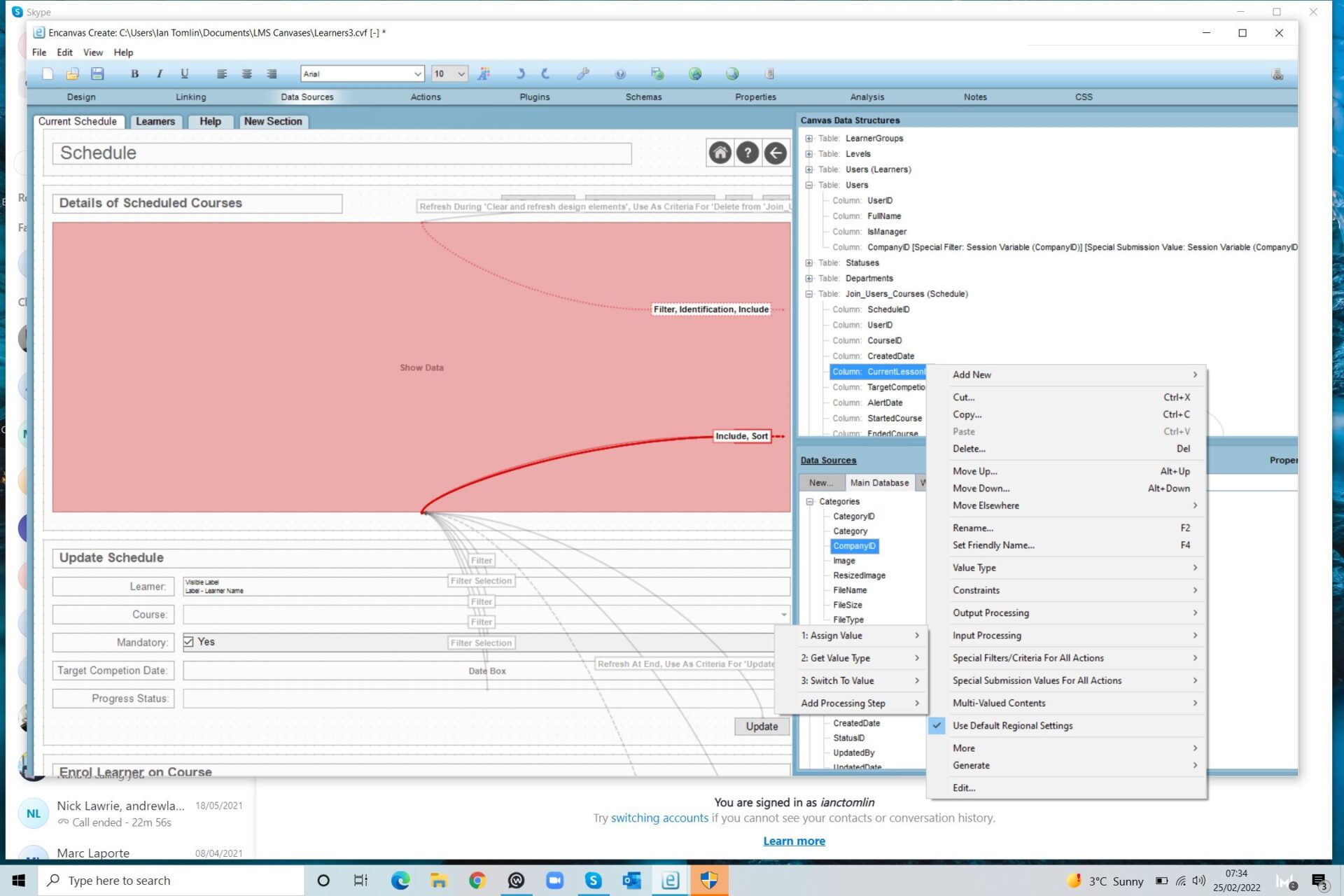
1. Extract, Transform and Load (ETL) tools and bots – This feature allows you to create ways to pump data from different systems (that may be located at different physical locations, or locked behind firewalls) to serve up data from existing systems, to then extract, transform and load it into your new app. Often, this sort of tooling will use if/then logic rules to validate, adapt and enrich data as it is uploaded.
2. Ready-to-Use Data Connectors – This is tooling that connects your app (and the server it sits on) to third-party systems that have data of differing types stored in differing ways.
3. Data Mashup support – This is about blending ‘bits of data’ from one data source, with ‘other bits of data’ from another to populate tables. One key technical aspect of this feature is that it needs to be multi-threading. This describes an ability to keep the data connections in use ‘open’ as needed.
4. Plug-In Support – It’s handy to be able to use third-party app components and data sources as part of new application developments. When using third-party components, app designers will want to be able to act on the data in the native design environment and not have to ‘code’ changes in database systems prior to import. This is where plug-in tools like HYPER-DRIVE from ENCANVAS come in—to de-skill and simplify the task of harnessing IT existing app components.

Ian Tomlin is a management consultant and strategist specializing in helping organizational leadership teams to grow by telling their story, designing and orchestrating their business models, and making conversation with customers and communities. He serves on the management team of Encanvas and works as a virtual CMO and board adviser for tech companies in Europe, America and Canada. He can be contacted via his LinkedIn profile or follow him on Twitter.
Now read: